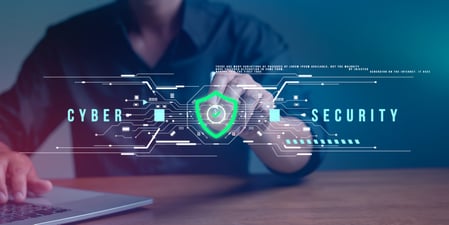Cybersecurity Automation in Utilities: Enhancing Protection and Efficiency
Public utilities play a crucial role in delivering essential services such as electricity, water, and gas. As these critical infrastructures become more interconnected, they also become prime targets for cyberattacks. Cybersecurity in utilities is no longer optional—it is a necessity. To combat rising threats, organizations are increasingly turning to cybersecurity automation for utilities, leveraging advanced technologies to detect, respond to, and neutralize threats in real-time.
The Growing Cybersecurity Challenges in Utilities
Utilities face unique cybersecurity challenges due to their reliance on operational technology (OT) and IT systems. These interconnected environments create vulnerabilities that cybercriminals can exploit to disrupt essential services. Ransomware attacks, insider threats, and nation-state cyber warfare are just a few of the risks utilities must defend against. Traditional security measures are no longer sufficient, making cybersecurity automation a game-changer in protecting critical infrastructure.
Did You Know?
Did you know that over 60% of utilities have experienced at least one cyberattack in the past year, with many breaches going undetected for months?
How Cybersecurity Automation Protects Utilities
1. Real-Time Threat Detection
Automated cybersecurity systems continuously monitor networks and infrastructure for anomalies, identifying potential threats before they cause significant damage.
2. AI-Powered Incident Response
Cybersecurity automation for utilities uses artificial intelligence (AI) and machine learning (ML) to analyze threats and execute rapid responses, reducing the time required to mitigate attacks.
3. Proactive Vulnerability Management
Automated tools scan for vulnerabilities in real-time, ensuring that security patches and updates are applied before attackers can exploit them.
4. Seamless Integration with OT and IT Systems
Cybersecurity automation solutions are designed to work across both OT and IT environments, ensuring comprehensive protection for utilities.
5. Automated Compliance Reporting
Regulatory compliance is a major concern for utilities. Automated systems generate detailed, audit-ready reports, simplifying compliance with industry standards such as NERC CIP and NIST frameworks.
Benefits of Cybersecurity Automation in Utilities
1. Faster Incident Response
By automating security operations, utilities can detect and neutralize threats in seconds rather than hours or days.
2. Reduced Human Error
Automation minimizes the risk of human error, ensuring consistent execution of security protocols.
3. Cost Savings
Automated cybersecurity reduces the need for large security teams, lowering operational costs while maintaining high security standards.
4. Increased Reliability
Enhanced threat detection and response capabilities ensure the uninterrupted delivery of essential services.
5. Scalable Security
As utilities expand their infrastructure, automated solutions scale accordingly, providing ongoing protection against evolving threats.
How to Implement Cybersecurity Automation in Utilities
For utilities looking to integrate automation into their cybersecurity strategies, consider these steps:
- Assess Current Security Gaps: Conduct a thorough audit of your existing cybersecurity posture to identify vulnerabilities.
- Invest in AI-Driven Solutions: Leverage advanced technologies that provide real-time threat detection and automated incident response.
- Integrate with Existing Systems: Ensure that cybersecurity automation tools seamlessly work with both OT and IT environments.
- Implement Automated Compliance: Use automation to simplify compliance reporting and reduce regulatory burdens.
- Work with Security Experts: Partner with cybersecurity professionals, such as BitLyft AIR®, to optimize automation strategies.
How BitLyft AIR® Enhances Cybersecurity Automation for Utilities
BitLyft AIR® provides cutting-edge cybersecurity automation solutions tailored to the needs of public utilities. With AI-driven threat detection, automated incident response, and seamless compliance reporting, BitLyft AIR® ensures utilities remain protected from emerging cyber threats. Learn more about our advanced security solutions at BitLyft AIR® Security Automation.
FAQs
Why is cybersecurity automation important for utilities?
Cybersecurity automation enhances protection by providing real-time threat detection, rapid response, and improved compliance, reducing the risk of cyberattacks.
How does AI improve cybersecurity in utilities?
AI-driven cybersecurity analyzes threats more efficiently than traditional methods, enabling automated detection and response to mitigate risks faster.
What are the biggest cybersecurity threats facing utilities?
Utilities are frequently targeted by ransomware, insider threats, and nation-state attacks, making proactive cybersecurity measures essential.
Can cybersecurity automation reduce operational costs?
Yes, automation minimizes the need for manual security monitoring and response, reducing labor costs while improving security effectiveness.
How does BitLyft AIR® help with cybersecurity automation?
BitLyft AIR® offers AI-powered security solutions that automate threat detection, incident response, and compliance reporting for utilities.





